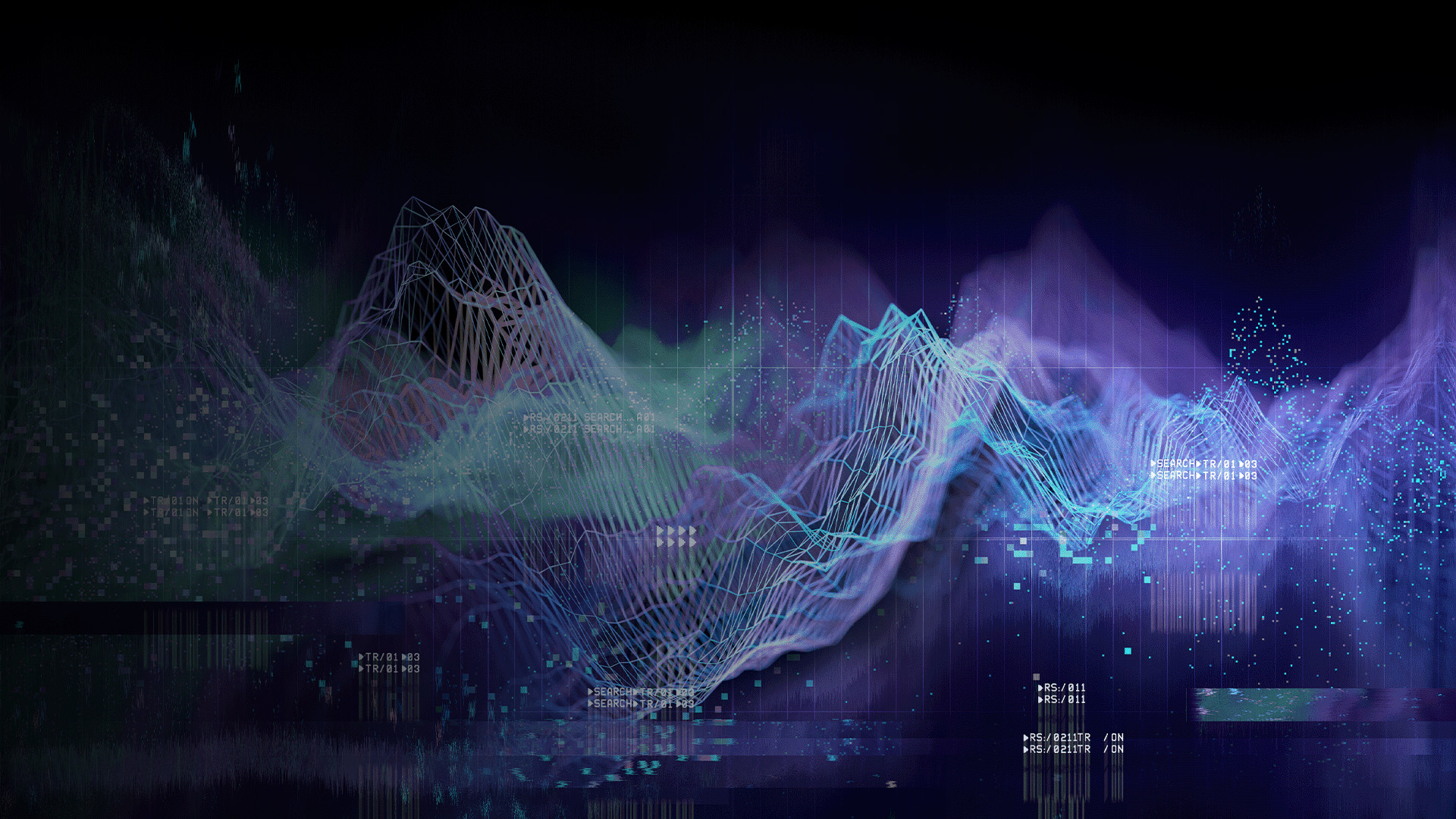Data visualization is an important tool in understanding the swathes of information at our fingertips. In fact, the right visuals can transform data from static numbers and stats into dynamic, digestible insights.
And this applies to more than just business. The transformation of data into graphic elements is applicable to almost any aspect of life, and some forms of data visualization have actually changed the world. So, from the interesting to the world changing, here are a few examples of some powerful data visualizations that have captured our imagination.
1. 2024 Men’s Olympic 100m Final Visualization
When we think of data visualization, we think of elements like charts and graphs. However, data can be represented in a number of different ways, and one of my recent favourites is this visual depiction of the 2024 Men’s Olympic 100m final.
This graphic captures the essence of what is being hailed as one of the greatest races in modern Olympic history. Even more than a video replay of the race, the visualization dramatically showcases how narrow the margin of victory was, turning mere milliseconds into a compelling visual narrative that illustrates just how close the competition was.
2. Florence Nightingale’s Rose Diagram
Florence Nightingale’s Rose Diagram, also known as the Coxcomb chart, is a landmark in the history of data visualization and public health. Developed in the 1850s during the Crimean War, Nightingale created this innovative visualization to communicate the causes of death among British soldiers. At the time, hospitals were very unsanitary, and more soldiers were dying from preventable diseases like typhus, cholera, and dysentery than from battle wounds.
Nightingale, who was trained in mathematics and statistics, meticulously collected data that identified sanitation as a critical issue. The graphic itself came about because she recognized that traditional tables of data would not be effective in persuading the government and the public to take action. So, the Rose Diagram - a circular histogram where each wedge represented a month and the area of each wedge showed the number of deaths – was born. The diagram vividly illustrated how deaths from disease far outstripped those from combat.
“Printed tables and all-in double columns, I do not think anyone will read. None but scientific men ever look in the Appendix of a Report. And this is for the vulgar public.” -Marie Curie
3. John Snow’s Cholera Map
Physician John Snow’s cholera map from the 1854 London outbreak is a truly groundbreaking example of data visualization. At a time when the miasma theory, which blamed diseases like cholera on “bad smells,” was widely accepted, Snow hypothesized that cholera was waterborne. So, he collected data on deaths in the Soho district, mapping their locations alongside public water pumps. His map clearly showed that cholera deaths were concentrated around one particular pump on Broad Street, providing a visual proof of his hypothesis.
Snow’s map was groundbreaking because it offered a clear visual representation of the outbreak’s epicentre, something that a table just wouldn’t have been able to convey. The map led to the pump handle being removed, ending the outbreak and demonstrating the practical value of data visualization. Snow’s method has become foundational in epidemiology, proving the power of visual tools in communicating complex data.
4. Napoleon's March Map
We often talk in business about how data can tell a story, and there is no greater example than Charles Minard’s map of Napoleon’s Russian campaign of 1812. It is often cited as one of the greatest data visualizations ever created, it tells a dramatic story of loss. The width of the line on the map represents the number of troops, with the line gradually narrowing to reflect the army's losses over time. This striking visual captures the dramatic decline in troop numbers due to harsh weather, disease, and combat, providing a powerful depiction of the campaign's toll.
What makes Minard’s work so powerful is how it conveys multiple layers of information - geography, temperature, troop size, and direction - all in a single visual. It not only shows the route they took to retreat but also shows the scale of attrition experienced by the army.
5. The Next America
"The Next America" is a data visualization project from the Pew Research Center that explores the evolving demographics of the United States. It demonstrates key trends such as an aging population, and increasing racial and ethnic diversity, in an interactive format. This approach allows users to engage with data dynamically, providing insights into how these demographic changes will impact politics, the economy, culture, and society. The project is designed to make complex data accessible and engaging, helping a wide audience grasp the implications of these trends.
That’s exactly what makes "The Next America" so innovative - its interactive presentation lets users adjust timelines and compare demographic groups to explore data in depth. This enhances engagement and also deepens understanding of demographic shifts and their real-world effects. By linking these shifts to societal changes, the graphic offers valuable insights into future American life, making it a crucial resource for policymakers, educators, and the public.
6. The Wind Map
The Wind Map, created by Fernanda Viégas and Martin Wattenberg, is a real-time visualization of wind patterns across the United States. This interactive map pulls information from the National Digital Forecast Database to create what they call a “living portrait” of the wind landscape in the US. Viégas and Wattenberg have said they would like to expand the project to the entire world. By showing the direction and speed of wind across various regions, the map serves a practical purpose, making complex weather data easily accessible to viewers. However, it also distinguishes itself through its striking aesthetic appeal. It’s even been featured by the Museum of Modern Art.
The Wind Map has been widely recognized for its ability to make environmental data not only understandable but also visually engaging, offering a new perspective on the natural forces that shape our world.
7. Visualizing Black America by W.E.B. Du Bois
In 1900, American sociologist, socialist, historian, and Pan-Africanist civil rights activist W.E.B. Du Bois presented a series of data visualizations at the Paris Exposition depicting the economic and social conditions of Black Americans at the time. They came about as Du Bois was looking for a way to show why the African diaspora in America was being held back in a single, simple, yet powerful format.
The result was “Visualizing Black America”, with charts, graphs, and maps that were groundbreaking in both their design and their subject matter. At a time when data visualization was still very new, Du Bois’s work stood out for its clarity, creativity, and its powerful message against the racist narratives of the era. His visualizations were not just about presenting data—they were a form of advocacy, challenging stereotypes and offering a visual argument for social justice. These visualizations fundamentally changed the representation of Black Americans. Today, this work is recognized as an important contribution to both data visualization and civil rights.
8. Ed Hawkins’ Climate Stripes
Just stripes. That’s how climate Scientist Ed Hawkins’ innovative climate visualization is often described. No numbers or graphs, just stripes. Hawkins created the Climate Stripes to visually represent the progression of global warming from 1850 to the present day. Each stripe in the visualization represents a year, with colors ranging from blue to represent cooler years to red for warmer years.
What makes it so powerful and impactful is the simplicity. At a glance, you can see that the world is getting warmer. The Climate Stripes have fueled discussions about climate change across the globe, appearing on everything from social media to protest banners, and have become a powerful tool in raising awareness about the urgent need for action. The graphic has also inspired similar visualizations, such as NOAA’s representation of precipitation across the US. It is a masterclass in simplicity.
9. The London Tube Map
Subway maps in major metropolitan areas are ubiquitous and, you might not realize, that they are amazing examples of data visualizations. And it was the London Tube Map, designed by Harry Beck in 1931, that sparked this trend, revolutionizing how we visualize complex transit data. Before Beck’s design, maps of the London Underground may have been geographically accurate but they were also difficult to read, which made them almost unusable.
Beck’s genius was in realizing that commuters cared more about the relative positions of stations and the connections between lines than about geographical accuracy. So, instead of geographic representations, he used only horizontal, vertical and 45º lines, and each line was represented by a set of standard colours. By abstracting the map he created a design that was easy to navigate and looked really nice. The London Tube Map has since become an iconic example of information design, influencing transit maps worldwide.
Takeaways
Not all of these visualizations will be relevant to your team or business, but there are some core principles we can take away and apply to our own data visualization strategies:
- Simplicity is key. Not every dataset needs to be displayed in a complex graph or graphic. Remember - just stripes.
- Tell a story. Data doesn’t have to be boring, it can tell a compelling narrative if you use the right visualizations.
- Remember your audience. Some of the most powerful visualizations have been born out of tailoring the graphic to the audience.
- Have fun with it. Data doesn’t have to be all impact and story, it can be a fun way to show trends or just fun facts. Don’t be afraid to get creative.
Looking for a powerful but simple way to visualize and analyze data from across your tech stack? Try Hurree. Hurree’s powerful platform consolidates your data into one visual space so you can identify trends, gain insights, and share with clarity. Start a free trial now. No credit card required.
Share this
You May Also Like
These Related Stories

How to Visualize Data: Top Tips and Best Practice

15 Facts That Show the Power of Dashboards



